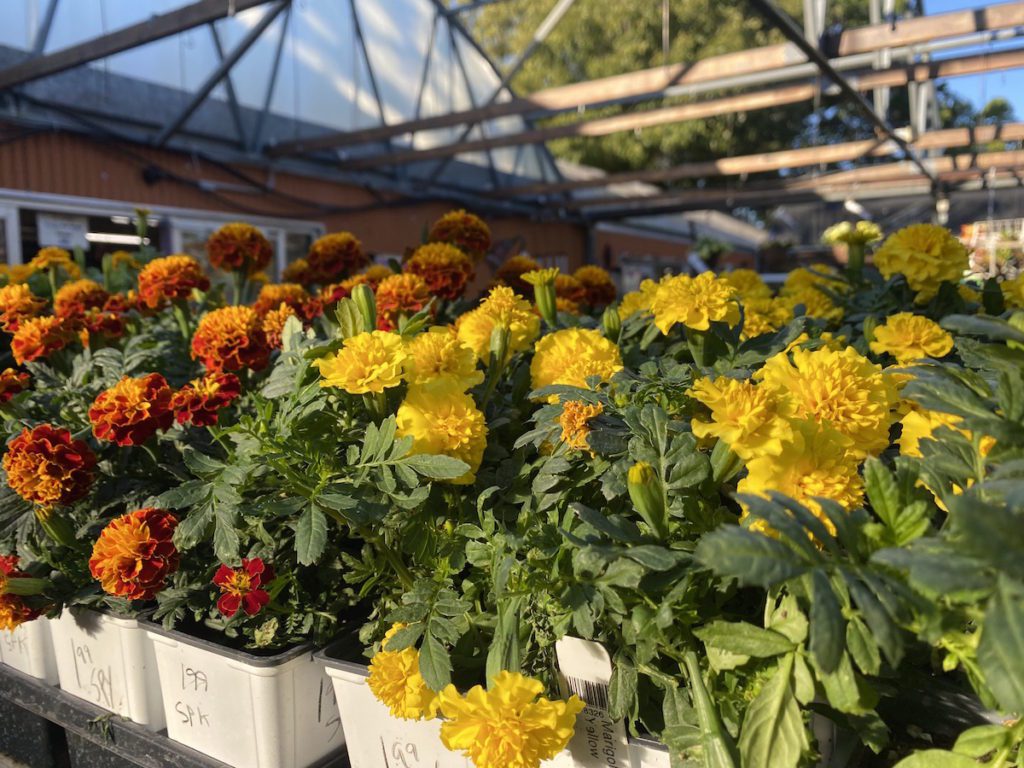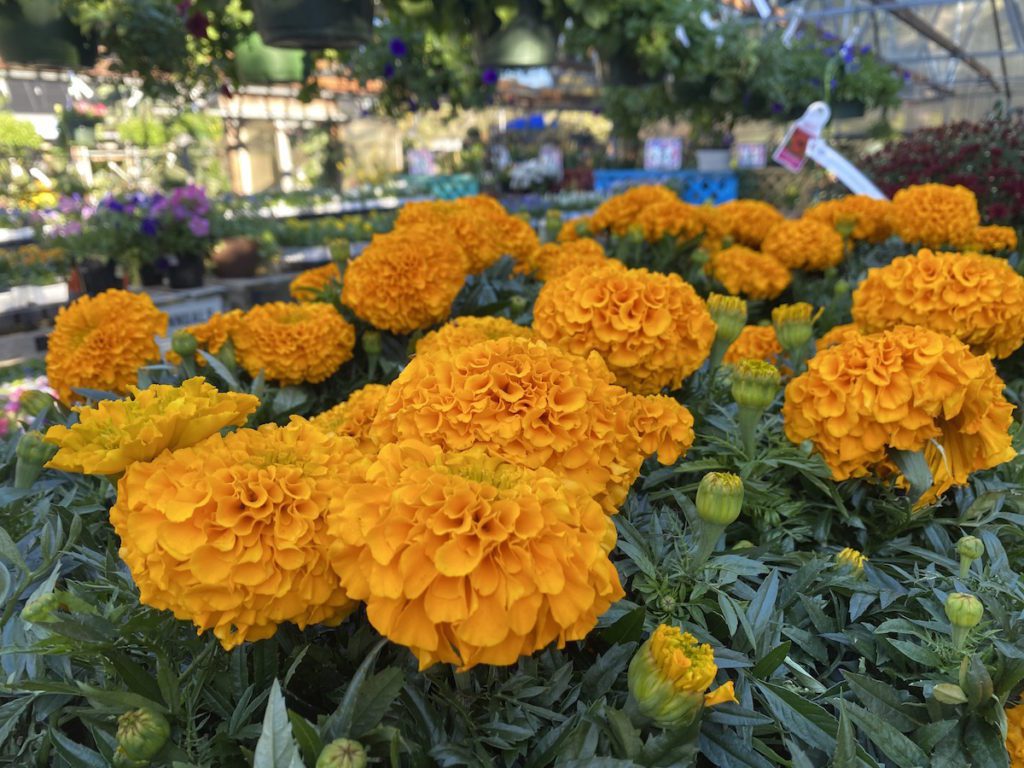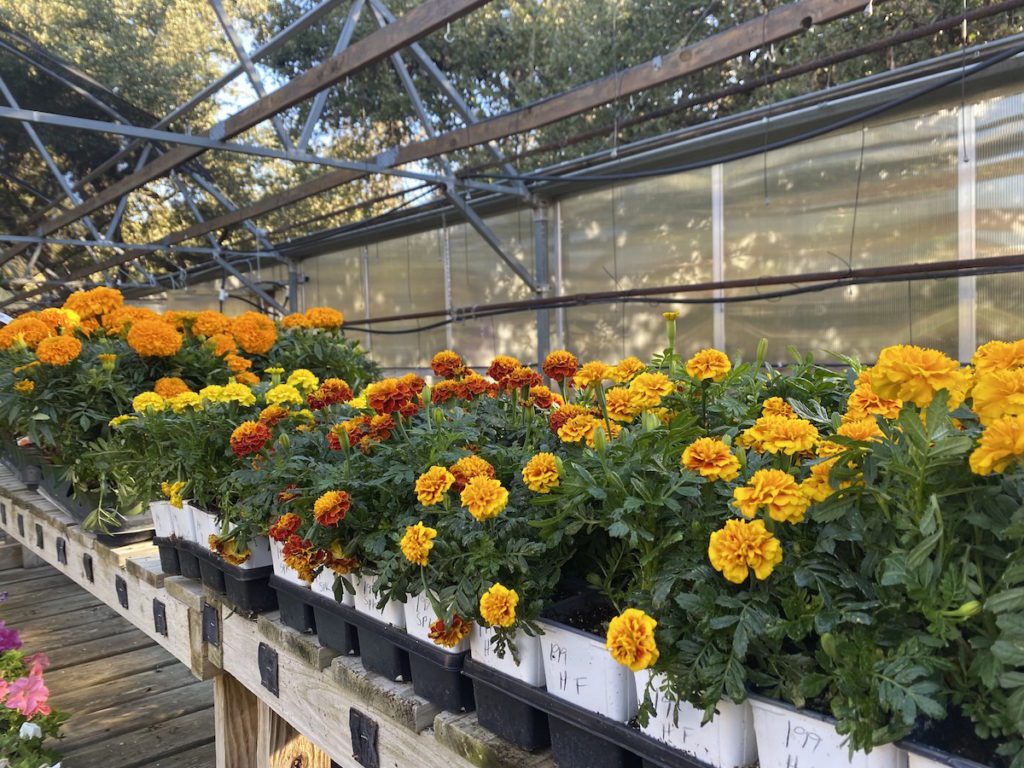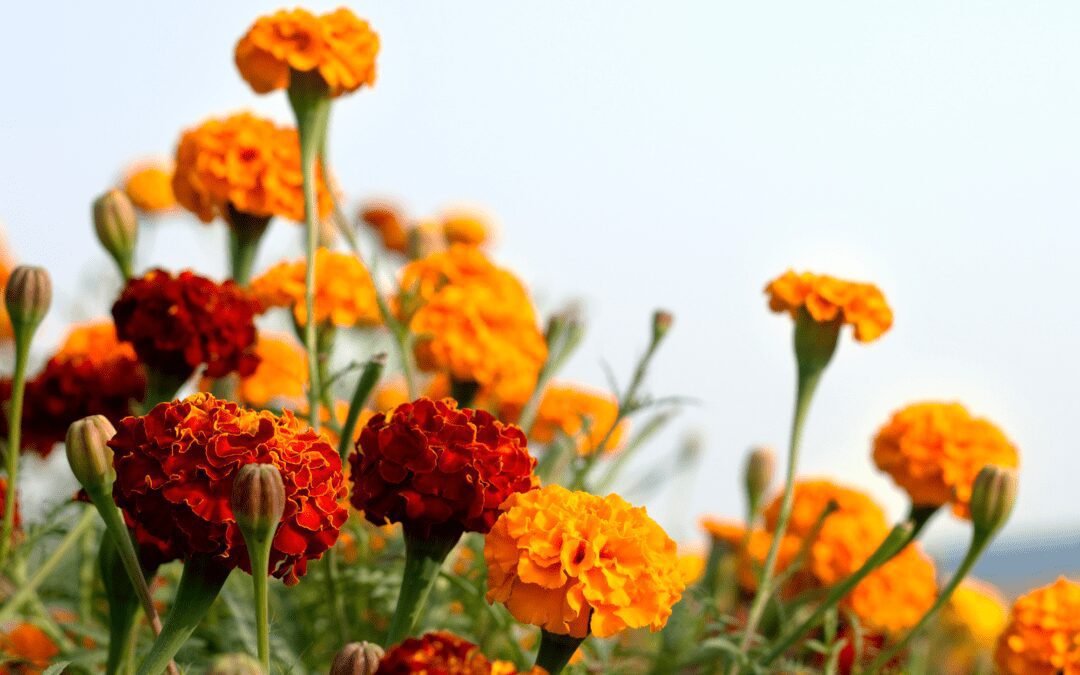That all stopped the year I tried growing marigolds in fall. Life Changer. Don’t ask me why I didn’t try earlier knowing that spider mites love hot, dry weather combined with sickly, gasping marigolds.
If you have struggled with marigolds in the past, but you love their cheerful blooms, you might want to read on and see which type of marigold you are going to try growing this fall.

Brilliant orange, golden yellow, and rusted bronze are the main colors of blooms. Flower diameter depends on variety of marigold, but they can range from 0.5″ W to 4″ W.
These cheerful pompom-like blooms bring instant fall color to your world and marigolds are nice option when you are tired of seeing mums. (Although our mums are looking pretty fabulous right now.)
We just got some marigolds in today and I stopped in my tracks to snap some pictures and eenie-meenie-miney-mo my own selections. I left plenty marigolds for you though. So take a look at what is here now, and try these beauties for some fall flair!


African Marigolds and French Marigolds
Quick Look African Marigold
- Avg. Mature Growth: 1-3′ T x 1-2′ W
- Light Exposure: Full Sun
- Soil Preference: Well Draining, Sandy, Loamy
- Water Needs: Water when top 1-2″ of soil is dry
- Bloom Season: Spring and Fall


Quick Look French Marigold:
- Avg. Mature Growth: 6-8″T (petite French Marigolds, 10-24″T (medium), and 36″ (standard)
- Light Exposure: Full Sun
- Soil Preference: Well Draining, Sandy, Loamy
- Water Needs: Water when top 1-2″ of soil is dry
- Bloom Season: Spring and Fall


Calendulas are cold tolerant to 20°F, which is usually just fine for our San Antonio winters. You get the look of marigolds in flowers that will last you multiple seasons.
That’s it, that’s all I got today. Go get yourself some gorgeous fall and winter color. The marigolds and calendulas are fresh!
~The Happy Gardener, Lisa Mulroy


Is it true the marigolds should not be watered from sprinklers?
We think this is true for most plants. Best to keep the water off of the foliage to prevent fungal disease.